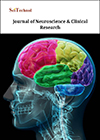About the Journal of Neuroscience & Clinical Research

Journal of Neuroscience & Clinical Research is a peer-reviewed scholarly journal that aims to publish the most complete and reliable source of information on the discoveries and current developments in the mode of original articles, review articles, case reports, short communications, etc. in all areas of Neuroscience and making them available online freely without any restrictions or any other subscriptions to researchers worldwide.
Submit your manuscript at Online Submission System as e-mail attachment to the Editorial Office at manuscript@scitechnol.com
Journal of Neuroscience & Clinical Research focuses on the topics include:
- Nervous System
- Neurology
- Neurophysiology
- Cellular & Molecular Neuroscience
- Cognitive & Behavioral Neuroscience
- Systems Neuroscience
- Neurodegeneration - Neurodegenerative Diseases
- Neurological Disorders
- Neuropsycology
- Neuropathology
- Neurosurgery
- Neuroimaging
Review processing is performed by the Editorial Board members of Journal of Neuroscience & Clinical Research or outside experts; at least two independent reviewers approval followed by editor approval is required for acceptance of any citable manuscript. Authors may submit manuscripts and track their progress through the system, hopefully to publication. Reviewers can download manuscripts and submit their opinions to the editor. Editors can manage the whole submission/review/revise/publish process.
Submit manuscript by sending as an e-mail attachment to the Editorial Office at manuscript@scitechnol.com
Neurology
Neurology is the branch of medicine, a specialized area, concerned with the study and treatment of disorders and diseases of the nervous system that includes the brain, the spinal cord, and the nerves. The nervous system is a complex, sophisticated system that regulates and coordinates body activities.
Nervous System
The nervous system is a complex system that regulates and coordinates body activities. It is the collection of nerves and specialized cells known as neurons that transmit signals between different parts of the body. Structurally, the Nervous system has two componenets: Central nervous system (comprises the brain and spinal cord) and Peripheral nervous system (neural elements). The nervous system consists of the brain, spinal cord, and a complex network of neurons, in addition to these, principal organs include: eyes, ears, Sensory organs of taste and smell, Sensory receptors located in the skin, joints, muscles, and other parts of the body.
Neurosciences
Neuroscience Neurosciences or Neural Science is the study of Nervous system that includes the brain, the spinal cord, and the nerves. Neuroscience deals with the structure, function, genetics and physiology of the most complex living structure- Brain and Nervous System. Neuroscience concerns all scientific aspects of the nervous system- structural, molecular, cellular, functional, evolutionary, medical and computational aspects.
Neuropsychology
Neuropsychology is a branch of clinical psychology which mainly deals with study of brain and nervous system and how they affect psychological processes, cognitive function and behaviors. It is study of understanding the relationship between physical brain and behavior.
Neuropathology
Neuropathology is the study of disorders of brain, spinal cord, peripheral nerve and muscle. It is the study which mainly deals with study of how the neurons, neuroglia, connective tissues, blood vessels, meninges, and peripheral nerves react toward disease and traumatic causes.
Neuroimaging
Neuroimaging is also called as brain image scan, it refers to the techniques that produce images of the brain without requiring surgery or incision. These are the techniques useful in visualizing the structure and function of the brain and it is an important tool for research and medical diagnosis.
Behavioral Neuroscience
Behavioral Neuroscience is the study of brain mechanisms or neural mechanisms underlying behavior. Behavioral Neuroscience concerns with the application of neurobiology for investigating the complex interplay between the brain, behavior and environment. Behavioral Neuroscience contributes strongly to the understanding of medical disorders and has contributed important therapeutic data on variety of conditions, including: Parkinson's Disease, Alzheimer's Disease, Huntington's Disease, Clinical Depression, Schizophrenia, Autism, Anxiety, etc.
Cognitive Neuroscience
Cognitive neuroscience, a branch of Neuroscience, concerns the scientific study of the neural mechanisms underlying cognition. It is a multidisciplinary field of research that encompasses systems neuroscience, computation, and cognitive science for understanding the relationship between cognitive phenomena and the underlying physical substrate of the brain. Cognitive neuroscience draws from linguistics, neuroscience, psychology and cognitive science with two broad directions; behavioral/experimental or computational/modeling.
Brain
The Brain is the main organ of the nervous system. The brain, along with the spinal cord, comprises the body's central nervous system. Brain is the major control network for the body's functions and abilities. The brain is one of the largest and most complex organs in the human body.
Spinal Cord
The Spinal Cord is the most important structure between the body and the brain. The spinal cord is a long, fragile tubelike structure that begins at the end of the brain stem and continues down almost to the bottom of the spine (spinal column). It is the cylindrical bundle of nerve fibres and associated tissue which is enclosed in the spine and connects nearly all parts of the body to the brain, with which it forms the central nervous system. The spinal cord consists of nerves that carry incoming and outgoing messages between the brain and the rest of the body.
Cellular Neuroscience
Cellular Neuroscience is the study of neurons at a cellular level. It deals with the cellular mechanisms underlying the functions of the cells composing the nervous system across. The central nervous system contains two major cell populations, neurons and glial cells. Cellular Neuroscience focuses on the behavior of whole cells in the nervous system and and their role in information processing.
Molecular Neuroscience
Molecular Neuroscience, a branch of Neuroscience, is the study of the role of individual molecules in the nervous system. Molecular Neuroscience observes concepts in molecular biology applied to the nervous systems.
Clinical Neuroscience
Clinical Neuroscience is a branch of neuroscience that focuses on the fundamental mechanisms that underlie diseases and disorders of the brain and central nervous system.
Neurological Disorders
A neurological disorder is any disorder of the body nervous system. Structural, biochemical or electrical abnormalities in the brain, spinal cord or other nerves can result in a range of symptoms. The nervous system is vulnerable to various disorders, the damage caused due to trauma, infections, degeneration, structural defects, tumors, blood flow disruption and autoimmune disorders. The disorders may involve- Vascular disorders, Infections, Structural disorders, functional disorders, degeneration.
 Spanish
Spanish  Chinese
Chinese  Russian
Russian  German
German  French
French  Japanese
Japanese  Portuguese
Portuguese  Hindi
Hindi 




